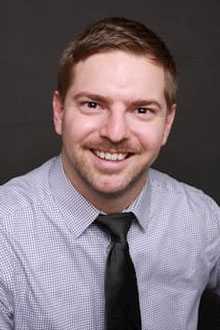Blepharoplasty for Bilateral Upper Eyelids
Transcription
CHAPTER 1
Hello, my name's Dr. John Lee. I'm the oculoplastic and reconstructive surgeon for Boston Vision. I want to introduce a video today where we're going to perform a blepharoplasty surgery on both upper eyelids. It can be done for either cosmetic or for medical reasons. Initially, when we see the patient on the day of surgery, we will see if they have any questions. If they don't, we will proceed to mark their upper eyelids using a surgical marker. And at this stage is when we decide how much skin to remove and how to shape that excision of skin. Once that skin is marked, we do something called a pinch test, where we take a set of dull forceps and we bring the edges of those marked ellipses together to ensure that we don't remove too much skin. Once we're happy with the shape, and position, and size of that ellipse, we will anesthetize that area with 2% lidocaine and epinephrine on a very thin 32 gauge needle. We'll have the patient sit for about 15 or 20 minutes. While that's working, we come into the operating room. We'll get them prepped and draped. The initial incision is done with a 15 blade, and the ellipse is then simply excised with Westcott scissors. The resulting wound bed is then cauterized with high temperature cautery to control any bleeding blood vessels, and then the wound is then simply closed. In my technique, I use a running suture using a 6-0 plain gut. And once that's all done, we will proceed to the other side and complete the procedure, try to maintain as much symmetry as possible.
CHAPTER 2
So she's having a bilateral, cosmetic upper lid blepharoplasty. The surgical techniques are very similar to a medical upper lid blepharoplasty. The one additional twist we're gonna do for her is we're gonna excise these xanthelasma plaques right here. I've done my best to incorporate that into a normal blepharoplasty ellipse. We will have some close plaque remnants right at the edge of that. And we'll probably have some there as well. In fact, some of the cholesterol plaques are outside of our intended incision. Patient knows that we will prioritize getting a good incision as opposed to taking out every plaque.
CHAPTER 3
So the first incision will be along the lid crease. This is a 15 blade. The patient has already been anesthetized with lidocaine with epinephrine.
And we'll complete the excision of the ellipse with Westcott scissors. So here, we're removing an ellipse of skin. The tissue just underneath it is the orbicularis. And in the thin spots, we will see some of the preaponeurotic fat.
So I look at the wound edges here to see if there's any cholesterol plaque there. I don't see any. I think we got it all there. Excellent.
And you can see some of the yellow, the preaponeurotic fat. And we're using high temperature cautery just to control some of these blood vessels. She isn't bleeding very much at all. Okay.
And we simply close the wound with a running suture. I use 6-0 plain gut. Goal is to approximate the edges, make them right next to one another without any tension. Ideally, you want the wound edges to be everted, meaning that the under surfaces are touching one another. That promotes the best healing and the least objectionable scar. Dab on that side. Okay, follow. And at the end of the suture line, I'd like to create a loop and use that to tie off. Okay, we'll go to the other side.
CHAPTER 4
And we'll do essentially the same procedure. Let's double check our ellipse here. Yeah, so I can see there's a portion of the xanthelasma plaque that will fall outside of our ellipse. But if I do aim to take that, I think that'll be too much skin removal nasally, which will give her cosmetic problems and even potentially problems with lagophthalmos.
Again, Westcott scissors to remove the skin ellipse.
Not much bleeding. Do some more excision deeper of these cholesterol plaques. These are visible as these chalkish colored areas right there. Some smaller plaques right at the nasal part of the wound. Cautery, please. Can you get me the cautery? Hmm? Cautery. Okay.
And just as on the other side, a 6-0 plain gut to close. I'm gonna leave the loop to make that the other end of the knot. And you are all done.



